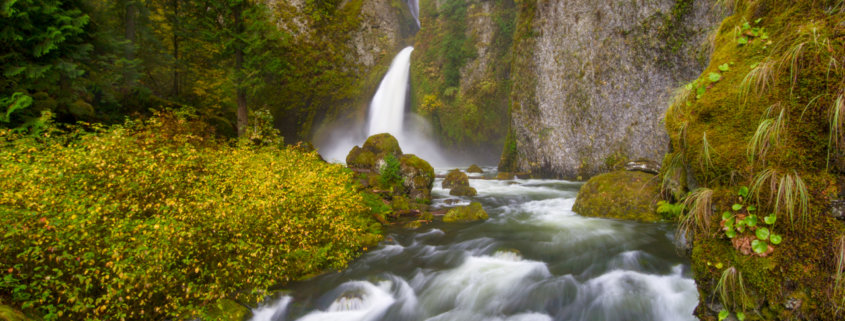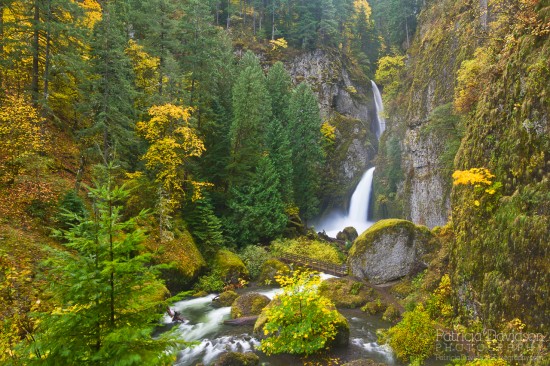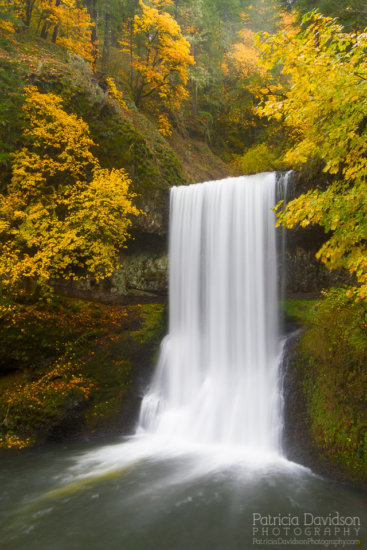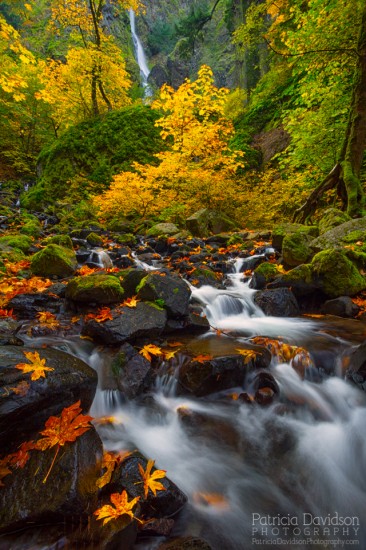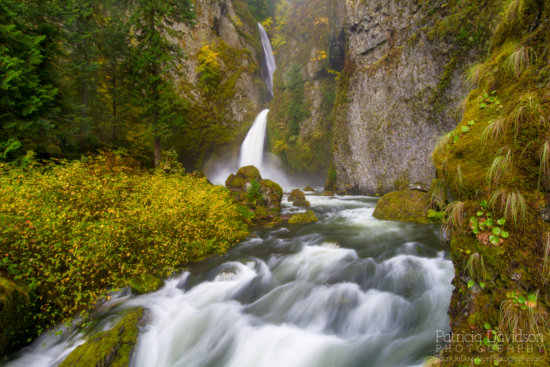How to Photograph Waterfalls in Autumn
When the end of summer comes with the crisp, fresh morning air, I begin to anticipate heading out to photograph waterfalls. There’s just something about the combination of vibrant, fall colors and flowing water that really excites me and propels me to the outdoors.
Taking the time to plan your location, check weather conditions and bringing the right equipment can go a long way to making a successful trip, yielding photos you will be happy with.
Planning your trip
When I’m planning my fall photography trips, I check the weather reports. Also, I check online resources for area conditions and locations, apps, reference books and maps. A good cloud cover, fog or rain, are perfect conditions for shooting waterfalls.
Be prepared
Wear the proper clothing. I like wearing layers, as autumn weather can be unpredictable. Your footwear is equally important. Good traction is necessary to prevent slipping on wet, mossy rocks. Some photographers wear hip waders so that they can get into the water.
Equipment
Below is a list of things I like to bring when I venture out to photograph waterfalls:
- Sturdy Tripod – Wind and flowing water can add to vibration for your camera. Often I use long exposure to get different effects on the water. A tripod is a must.
- Rain Sleeve / Umbrella – Protect your camera with a good rain sleeve. An umbrella can also be useful.
- Lens Cloths – Bring plenty of good absorbing lens cloths for wiping mist or rain from your lens.
- Shutter Release Cable – Helps to prevent vibration when pressing the shutter button. If you don’t have one, set your camera timer to 2 seconds.
- Circular Polarizing Filter – Use of this filter will cut out glare on water and enhance the foliage and surrounding scene to bring out some vibrancy.
- Neutral Density Filter – An ND filter will cut the amount of light and allow you to achieve long exposure. I like the silky effect on the water combined with long exposure techniques. I often stack my ND filter with my Circular Polarizing Filter. You should experiment to your personal tastes.
Composition
Take your time choosing your compositions. Often water levels in creeks or streams are low in the fall. That waterfall may be only a trickle so you’ll need to get creative when choosing your composition. It’s a perfect time to get right into the water and get down low to focus in on areas of interests. This can be fun!
- Set your camera to Live View. Looking through the LCD screen can make it easier to set up compositions.
- Shoot vertical and horizontal. You never know, you might need a vertical in the future for a magazine cover!
- Look for fall colors to include in your picture. Placement of colorful leaves on rocks in the foreground for example can make for a more pleasing picture.
- Experience with different lenses. I will most often use a wide-angle lens. However, I do love to try out my zoom lens for framing a tighter scene or focusing in on details.
- Look for patterns. Patterns and shapes in nature can make for unique compositions.
- Classic S-Curve. Framing an s-curve in your scene can make for a more compelling photo. With a flowing stream in the foreground, it can lead your eye right to the main attraction, the waterfall.
- Exposure. Be careful that you don’t overexpose the highlights. Overexposure of the highlights will remove details in your flowing water. See Jay & Varina’s Histogram Exposed landscape photography tutorial to learn more about exposure.
- Moving foliage. Watch for moving leaves. There will most likely be blurred areas in your picture if you aren’t careful. Use a faster shutter speed for one image and then combine later in post processing with your long exposure shot.
I hope these tips will help you make the most of your time. Most importantly, I hope you enjoy your time shooting autumn waterfalls!

